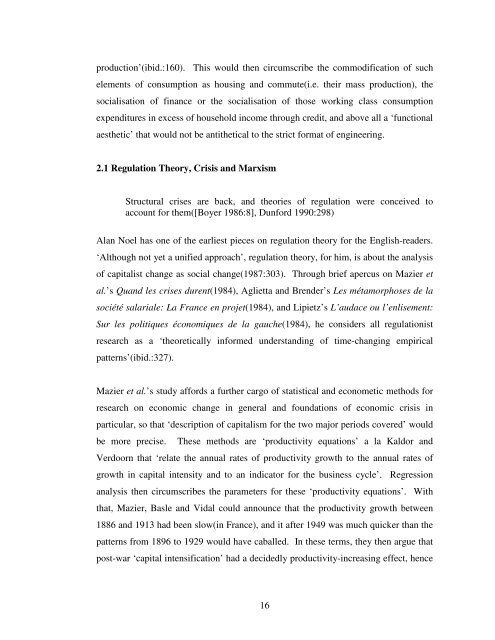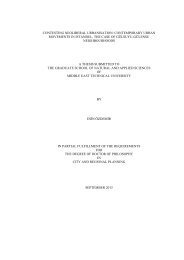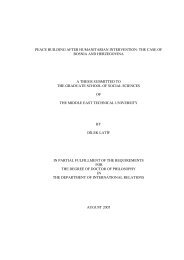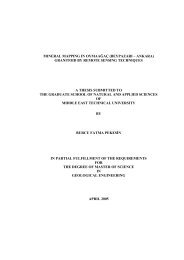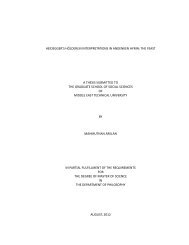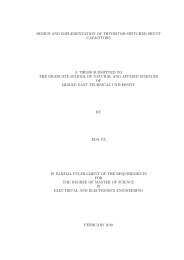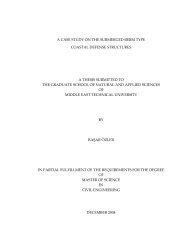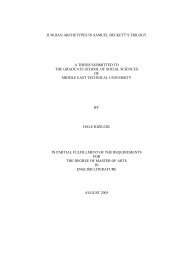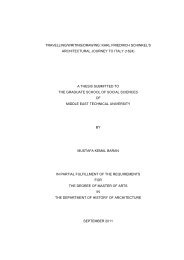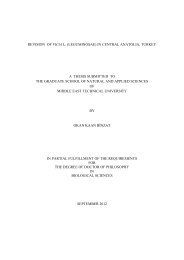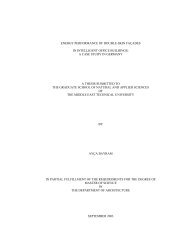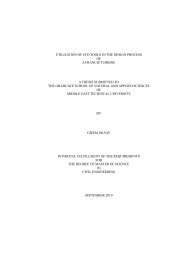View Original - Middle East Technical University
View Original - Middle East Technical University
View Original - Middle East Technical University
Create successful ePaper yourself
Turn your PDF publications into a flip-book with our unique Google optimized e-Paper software.
production’(ibid.:160). This would then circumscribe the commodification of such<br />
elements of consumption as housing and commute(i.e. their mass production), the<br />
socialisation of finance or the socialisation of those working class consumption<br />
expenditures in excess of household income through credit, and above all a ‘functional<br />
aesthetic’ that would not be antithetical to the strict format of engineering.<br />
2.1 Regulation Theory, Crisis and Marxism<br />
Structural crises are back, and theories of regulation were conceived to<br />
account for them([Boyer 1986:8], Dunford 1990:298)<br />
Alan Noel has one of the earliest pieces on regulation theory for the English-readers.<br />
‘Although not yet a unified approach’, regulation theory, for him, is about the analysis<br />
of capitalist change as social change(1987:303). Through brief apercus on Mazier et<br />
al.’s Quand les crises durent(1984), Aglietta and Brender’s Les métamorphoses de la<br />
société salariale: La France en projet(1984), and Lipietz’s L’audace ou l’enlisement:<br />
Sur les politiques économiques de la gauche(1984), he considers all regulationist<br />
research as a ‘theoretically informed understanding of time-changing empirical<br />
patterns’(ibid.:327).<br />
Mazier et al.’s study affords a further cargo of statistical and econometic methods for<br />
research on economic change in general and foundations of economic crisis in<br />
particular, so that ‘description of capitalism for the two major periods covered’ would<br />
be more precise. These methods are ‘productivity equations’ a la Kaldor and<br />
Verdoorn that ‘relate the annual rates of productivity growth to the annual rates of<br />
growth in capital intensity and to an indicator for the business cycle’. Regression<br />
analysis then circumscribes the parameters for these ‘productivity equations’. With<br />
that, Mazier, Basle and Vidal could announce that the productivity growth between<br />
1886 and 1913 had been slow(in France), and it after 1949 was much quicker than the<br />
patterns from 1896 to 1929 would have caballed. In these terms, they then argue that<br />
post-war ‘capital intensification’ had a decidedly productivity-increasing effect, hence<br />
16


